Breast Cancer: An Examination of the Potential of ACKR3 to Modify the Response of CXCR4 to CXCL12
- PMID: 30441765
- PMCID: PMC6274818
- DOI: 10.3390/ijms19113592
Breast Cancer: An Examination of the Potential of ACKR3 to Modify the Response of CXCR4 to CXCL12
Erratum in
-
Correction: del Molino del Barrio et al. Breast Cancer: An Examination of the Potential of ACKR3 to Modify the Response of CXCR4 to CXCL12. Int. J. Mol. Sci. 2018, 19, 3592.Int J Mol Sci. 2023 Dec 4;24(23):17108. doi: 10.3390/ijms242317108. Int J Mol Sci. 2023. PMID: 38069447 Free PMC article.
Abstract
Upon binding with the chemokine CXCL12, the chemokine receptor CXCR4 has been shown to promote breast cancer progression. This process, however, can be affected by the expression of the atypical chemokine receptor ACKR3. Given ACKR3's ability to form heterodimers with CXCR4, we investigated how dual expression of both receptors differed from their lone expression in terms of their signalling pathways. We created single and double CXCR4 and/or ACKR3 Chinese hamster ovary (CHO) cell transfectants. ERK and Akt phosphorylation after CXCL12 stimulation was assessed and correlated with receptor internalization. Functional consequences in cell migration and proliferation were determined through wound healing assays and calcium flux. Initial experiments showed that CXCR4 and ACKR3 were upregulated in primary breast cancer and that CXCR4 and ACKR3 could form heterodimers in transfected CHO cells. This co-expression modified CXCR4's Akt activation after CXCL12's stimulation but not ERK phosphorylation (p < 0.05). To assess this signalling disparity, receptor internalization was assessed and it was observed that ACKR3 was recycled to the surface whilst CXCR4 was degraded (p < 0.01), a process that could be partially inhibited with a proteasome inhibitor (p < 0.01). Internalization was also assessed with the ACKR3 agonist VUF11207, which caused both CXCR4 and ACKR3 to be degraded after internalization (p < 0.05 and p < 0.001), highlighting its potential as a dual targeting drug. Interestingly, we observed that CXCR4 but not ACKR3, activated calcium flux after CXCL12 stimulation (p < 0.05) and its co-expression could increase cellular migration (p < 0.01). These findings suggest that both receptors can signal through ERK and Akt pathways but co-expression can alter their kinetics and internalization pathways.
Keywords: ACKR3; CXCR4; CXCR7; chemokines; heterodimerization; metastasis.
Conflict of interest statement
The authors declare no conflict of interest.
Figures
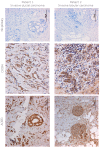
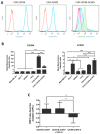

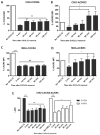

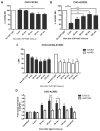
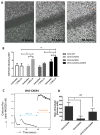
Similar articles
-
ACKR3 agonism induces heterodimerization with chemokine receptor CXCR4 and attenuates platelet function.Eur J Clin Invest. 2025 Jan;55(1):e14327. doi: 10.1111/eci.14327. Epub 2024 Oct 7. Eur J Clin Invest. 2025. PMID: 39373210 Free PMC article.
-
ACKR3 Regulation of Neuronal Migration Requires ACKR3 Phosphorylation, but Not β-Arrestin.Cell Rep. 2019 Feb 5;26(6):1473-1488.e9. doi: 10.1016/j.celrep.2019.01.049. Cell Rep. 2019. PMID: 30726732
-
Regulation of the chemokine receptors CXCR4 and ACKR3 by receptor activity-modifying proteins.J Biol Chem. 2025 Jan;301(1):108055. doi: 10.1016/j.jbc.2024.108055. Epub 2024 Dec 9. J Biol Chem. 2025. PMID: 39662834 Free PMC article.
-
CXCL12-CXCR4/CXCR7 Axis in Colorectal Cancer: Therapeutic Target in Preclinical and Clinical Studies.Int J Mol Sci. 2021 Jul 9;22(14):7371. doi: 10.3390/ijms22147371. Int J Mol Sci. 2021. PMID: 34298991 Free PMC article. Review.
-
Crosstalk between CXCL12/CXCR4/ACKR3 and the STAT3 Pathway.Cells. 2024 Jun 13;13(12):1027. doi: 10.3390/cells13121027. Cells. 2024. PMID: 38920657 Free PMC article. Review.
Cited by
-
Clinicopathological and Preclinical Patient-Derived Model Studies Define High Expression of NRN1 as a Diagnostic and Therapeutic Target for Clear Cell Renal Cell Carcinoma.Front Oncol. 2021 Nov 3;11:758503. doi: 10.3389/fonc.2021.758503. eCollection 2021. Front Oncol. 2021. PMID: 34804954 Free PMC article.
-
Repositioning Lidocaine as an Anticancer Drug: The Role Beyond Anesthesia.Front Cell Dev Biol. 2020 Jul 17;8:565. doi: 10.3389/fcell.2020.00565. eCollection 2020. Front Cell Dev Biol. 2020. PMID: 32766241 Free PMC article. Review.
-
Chemokine receptor 7 targets the vascular endothelial growth factor via the AKT/ERK pathway to regulate angiogenesis in colon cancer.Cancer Med. 2019 Sep;8(11):5327-5340. doi: 10.1002/cam4.2426. Epub 2019 Jul 26. Cancer Med. 2019. PMID: 31348616 Free PMC article.
-
Graphene oxide accelerates TGFβ-mediated epithelial-mesenchymal transition and stimulates pro-inflammatory immune response in amniotic epithelial cells.Mater Today Bio. 2023 Aug 2;22:100758. doi: 10.1016/j.mtbio.2023.100758. eCollection 2023 Oct. Mater Today Bio. 2023. PMID: 37600353 Free PMC article.
-
Stem-like signatures in human meningioma cells are under the control of CXCL11/CXCL12 chemokine activity.Neuro Oncol. 2023 Oct 3;25(10):1775-1787. doi: 10.1093/neuonc/noad076. Neuro Oncol. 2023. PMID: 37074930 Free PMC article.
References
-
- Greene F.L., Page D.L., Fleming I.D., Fritz A.G., Balch C.M., Haller D.G., Morrow M. AJCC Cancer Staging Manual. 6th ed. Springer; New York, NY, USA: 2002. Breast; pp. 223–240.
MeSH terms
Substances
LinkOut - more resources
Full Text Sources
Medical
Miscellaneous

